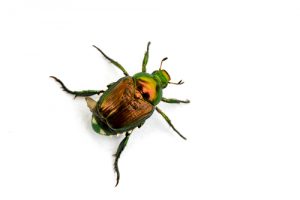What is an Invasive Species?
By Chris Williams on June 13, 2011.
Q. What does invasive species mean? I keep hearing all these pests referred to as invasive species.
A. There have been a lot of invasive species in the news lately, from stink bugs to long-horned beetles. The most general definition of an invasive species is a non-native species of plant or animal that out-competes native species in a specific habitat. There are other factors that make a pest invasive as well. It has been introduced into an environment where it is not normally found. It tends to reproduce and spread rapidly, usually because it has no natural predators or diseases in its new habitat to keep it in check. In most cases, its spread also threatens the environment, the economy, or society, sometimes including human health. In this context, all invasive species are considered pests but not all pests are invasive species. We have our good old native pests as well.
Most invasive species were accidentally introduced into the U.S. or hitchhiked in on ships or in cargo from other countries. Some were even purposely introduced by well-meaning individuals, organizations, even the government. An example is the Asian lady beetle, a very efficient predator on aphids and other plant pests, that was imported to help protect U.S. fruit crops. It has done that, to some extent, but it has also become a pest because it feeds on the fruit itself if it doesn’t find insects to feed on. And no one was able to predict that the beetles would become pests in homes where they look for places to spend the winter. Our native lady beetle species do not have this same behavior. The Asian lady beetle has just become too good at what it does and is now invasive and out-competing our native lady beetles.
 You’ll find that the common name of the invasive species often includes the country or region of its origin. For example, the Asian tiger mosquito, or the Japanese beetle, or the Africanized bee are all considered to be invasive species.
You’ll find that the common name of the invasive species often includes the country or region of its origin. For example, the Asian tiger mosquito, or the Japanese beetle, or the Africanized bee are all considered to be invasive species.
Often, the introduced pest is a plant pest. The plant pests that are the most noticeable to most of us are those that damage trees. Two recent beetle imports, the Asian long-horned beetle and the emerald ash borer, are decimating various species of hardwood trees that have no built-in defenses against these new pests. The western conifer seed bug and the brown marmorated stink bug are two new invasive species with the same habit as the Asian lady beetle of overwintering in homes in large numbers.
One pest that you might think fits the definition of an invasive species is the bed bug because of its recent spread throughout the country. Although some cases of bed bugs may have been brought into the U.S. from other countries, the bed bug has always been present here. It has just been in isolated pockets in very low numbers for decades until ideal conditions brought about its recent resurgence.
Invasive species don’t have to be insects. They can be other arthropod pests, weedy plants, diseases, or animals. Three of our most common birds — the house sparrow, the European starling, and the pigeon were all introduced intentionally, all have become invasive, and all are now considered pests.